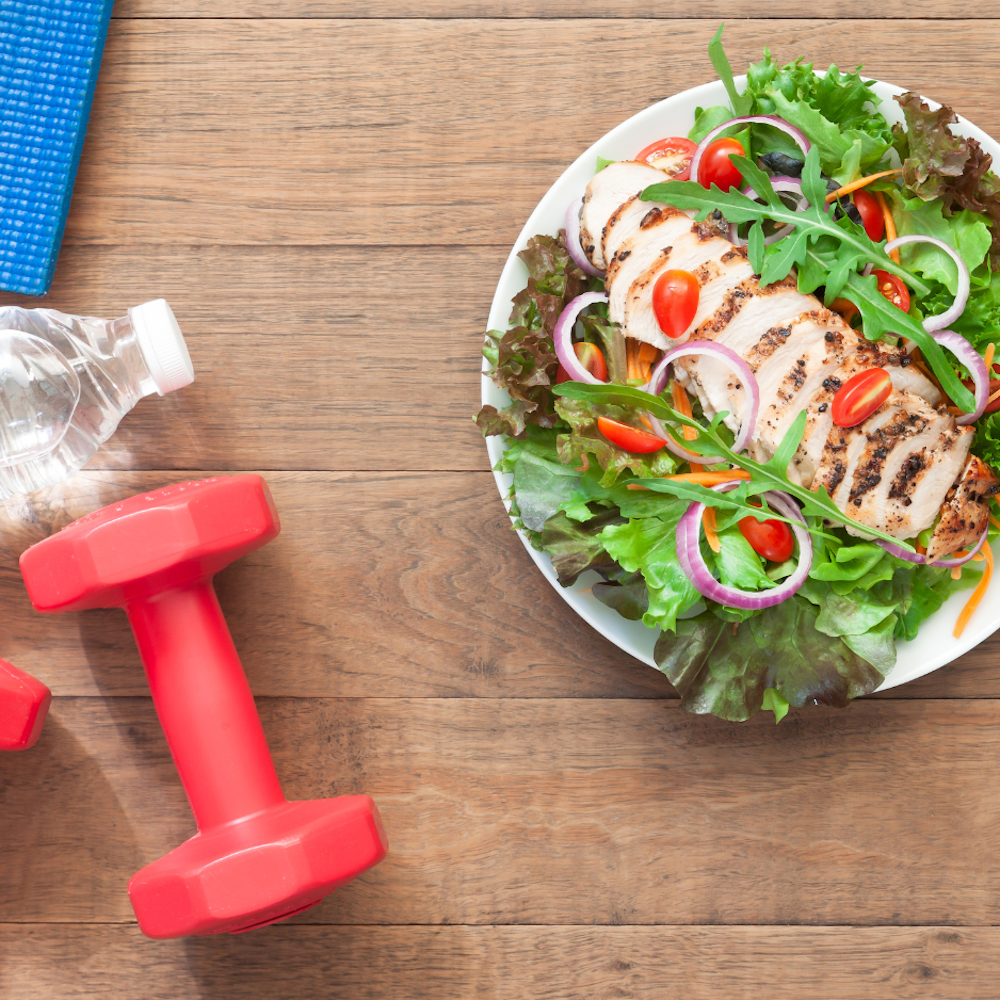Creatine Supplementation: What’s the Hype About?

America’s food supply, as well as our recent conversations around food, have become increasingly dominated by ultra-processed foods (UPFs).
Ultra-processed Food: WHY should we care and WHY does it matter?

America’s food supply, as well as our recent conversations around food, have become increasingly dominated by ultra-processed foods (UPFs).
Mindfulness and Meditation: A New Year Reset for Your Heart and Mind

The Balanced Plate addresses a gap in healthcare for clinicians, patients and families. Over the past 25 years, I have been caring for patients who come to me after receiving generalized recommendations to “eat better,”
What Exactly IS the Balanced Plate?

The Balanced Plate addresses a gap in healthcare for clinicians, patients and families. Over the past 25 years, I have been caring for patients who come to me after receiving generalized recommendations to “eat better,”
Resistance Exercise: A Key Strategy for Regulating Blood Sugar and Preventing Prediabetes

With the rising prevalence of prediabetes, a condition characterized by elevated blood sugar and insulin levels, effective prevention and management strategies are more important than ever. While we all know diet and exercise play an important role, the importance of resistance exercise is becoming apparent as more research interest and time is devoted to the subject. Often overshadowed by aerobic activity, strength training has been shown to play a crucial role in regulating blood sugar and improving insulin sensitivity — key factors in preventing or reversing prediabetes.
How Resistance Exercise Works
It Increases Muscle Mass: Muscles are major consumers of glucose, and increasing muscle mass through resistance training helps the body use blood sugar more efficiently.
It Improves Insulin Sensitivity: Regular resistance exercise enhances the body’s response to insulin, helping muscles absorb glucose with less reliance on insulin. Even a single session of strength training can improve insulin sensitivity for up to 48 hours.
It Reduces Visceral Fat: Resistance training helps reduce abdominal fat (specifically fat around the organs), which contributes to insulin resistance. Lowering visceral fat improves overall metabolic function.
It Helps Control Post-Meal Blood Sugar: Resistance exercises performed after meals help mitigate spikes in blood sugar, preventing postprandial hyperglycemia, a common issue in prediabetes.
Evidence Supporting Resistance Training
Studies show that resistance exercise significantly improves blood sugar control in people with prediabetes. A 12-week strength training program has been shown to reduce HbA1c (the estimated average blood sugar over three months) and improve insulin sensitivity. When combined with aerobic exercise, resistance training is particularly effective in reducing the risk of developing type 2 diabetes.
How to Get Started:
Frequency: Aim for two to three sessions per week, 20-30 minutes at a time.
Intensity: Start with moderate weight and gradually increase the load as your strength builds.
Exercise Types: Focus on compound movements (e.g., squats, lunges, push-ups) that target large muscle groups. Alternate focus between days on upper body/lower body.
Combine with Aerobic Exercise: Adding cardio enhances overall metabolic health. This can look like a brisk walk before your training session, or adding sprints, jumping jacks or 20 minutes of cycling.
Incorporating resistance exercise into your routine can feel daunting at first, but it is a powerful, effective way to manage blood sugar, improve insulin sensitivity and reduce the risk of developing type 2 diabetes. By building muscle, reducing fat and improving glucose control, strength training is a cornerstone of prediabetes prevention.
Curried Carrot Apple Soup

Purple Cabbage Salad with Parmesan and Chickpeas
When it comes to eating for blood sugar stability, incorporating a combination of fiber rich carbohydrates, non-starchy vegetables, lean proteins and healthy fats is key. We call this concept the “Balanced Plate,” a simple and sustainable approach to building healthy meals without focusing on the elimination of any one macronutrient group. Eating in this way helps to blunt blood sugar spikes and prevent crashes, leading to more stable glucose levels and optimal metabolic health. This colorful, hearty and entirely easy salad incorporates all four aspects of the balanced plate.
Serves 4-6
Salad Ingredients
1 small-to-medium head of purple cabbage, shredded or thinly sliced
1 can chickpeas, drained and well-rinsed
2 tablespoons avocado oil
½ teaspoon sea salt
a few grinds of fresh black pepper
1 cup shaved parmesan cheese
Dressing Ingredients
½ cup olive oil
2 tablespoons yellow miso paste
1 lemon, juiced
2 cloves garlic, minced
Salt and pepper, to taste
Directions
Preheat oven to 425°F
Place shredded or sliced cabbage in a large serving bowl, gently massage with clean hands to soften and set aside.
Spread a single layer of chickpeas on a parchment-lined baking sheet, drizzle with oil, season with salt and pepper and roast for 25-30 minutes, stirring occasionally, until golden and crispy. Set aside to cool.
While chickpeas roast, combine all dressing ingredients in a jar and shake well to combine. Toss dressing with cabbage.
Once cooled, add chickpeas to cabbage mixture and top with parmesan.
This salad keeps exceptionally well in the refrigerator, thanks to the hearty nature of the cabbage. Enjoy!
Exploring a Multimodal Approach to Alzheimer’s Disease Prevention and Treatment

If you are a patient of a BaleDoneen Method provider, you have already participated in a deep dive into your genetics, personal, medical and family history, along with individual biomarkers that influence your risk for heart and brain disease.
Embracing The Change in Season: A Fresh Start for Healthy Habits

As the golden hues of summer give way to the crisp, vibrant shades of fall, many of us feel a natural urge to reestablish routines. The transition from summer’s relaxed days to fall’s more structured schedule often inspires us to focus on creating healthful habits.
The Sunshine Vitamin: The Many Benefits of Vitamin D — Essential for Health and Wellness

In the realm of essential nutrients, few garner as much attention and importance as Vitamin D. Often referred to as the “sunshine vitamin,” its benefits extend far beyond mere bone health. This month we’re delving into why this nutrient is crucial for so many aspects of our health, and how to ensure we’re getting enough. […]
